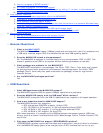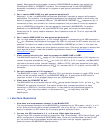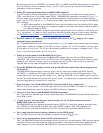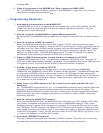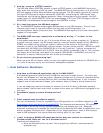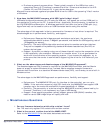
■ Purchase a general-purpose driver. These typically consist of the USB driver and a
companion library of C functions to access the driver. Drivers are matched to the VID
(Vendor ID) and PID (Product ID) in your device descriptor.
Microsoft has announced a general-purpose BULK driver for USB in the upcoming "Vista" version
of Windows.
5. How does the MAX3420E compare with USB 'serial bridge' chips?
USB serial bridge chips connect to a PC using its USB port, but appear as a virtual COM port to
the application running on the PC . A custom driver, supplied by the chip vendor, is required to
do this COM-USB transformation. A Windows application that talks to a serial (COM) port (e.g.,
HyperTerminal) can be used to talk to an USB-connected device using this method.
The advantage of this approach is that no enumeration firmware or host driver is required. The
disadvantages are in performance, flexibility, and support:
■ Performance: Because the bridge approach emulates a serial port, the maximum
achievable bandwidth is about 1 Megabit per second, well below the USB signaling rate of
12 Megabits per second.
■ Flexibility: The serial-USB bridge chips are hard-wired to emulate serial-port devices.
They are not capable of implementing standard Windows class devices (like HID) or
custom device types.
■ Support: A product you design using one of these chips will require the companion driver
to be installed by your customer. Because it is a custom driver, it is not guaranteed to
work with future versions of the operating system. If you choose this approach, try to
make sure that the vendor is committed to supporting the driver for the lifetime of your
product.
6. What are the advantages and disadvantages of the MAX3420E approach?
The disadvantages are that firmware is required for the MAX3420E controller and that Maxim
does not supply a custom Windows driver. Instead, Maxim supplies example firmware to
illustrate how to conform to a standard Windows device class (HID), and thereby to use a built-in
Windows driver.
The advantages to the MAX3420E approach are performance, flexibility and support.
■ Performance: The MAX3420E SPI port (its interface to the controller) can run up to
26MHz. If the controller supports a high SPI clock rate, the MAX3420E can support USB
transfers up to the maximum available full-speed bandwidth of 12Mbps.
■ Flexibility: The personality of a device using the MAX3420E is entirely determined by its
firmware. Therefore, it can implement any type of USB device.
■ Support: Once operating systems natively support general USB (BULK) transfers, the
need for serial-USB bridge chips will rapidly diminish.
6.
Miscellaneous Questions
1. Can my firmware determine which chip revision I have?
Yes. The read-only register R18 contains the revision number.
2. What is the current revision level of the MAX3420E?
Refer to the
MAX3420E QV for the latest data sheet and errata.
Application Note 3597: http://www.maxim-ic.com/an3597




